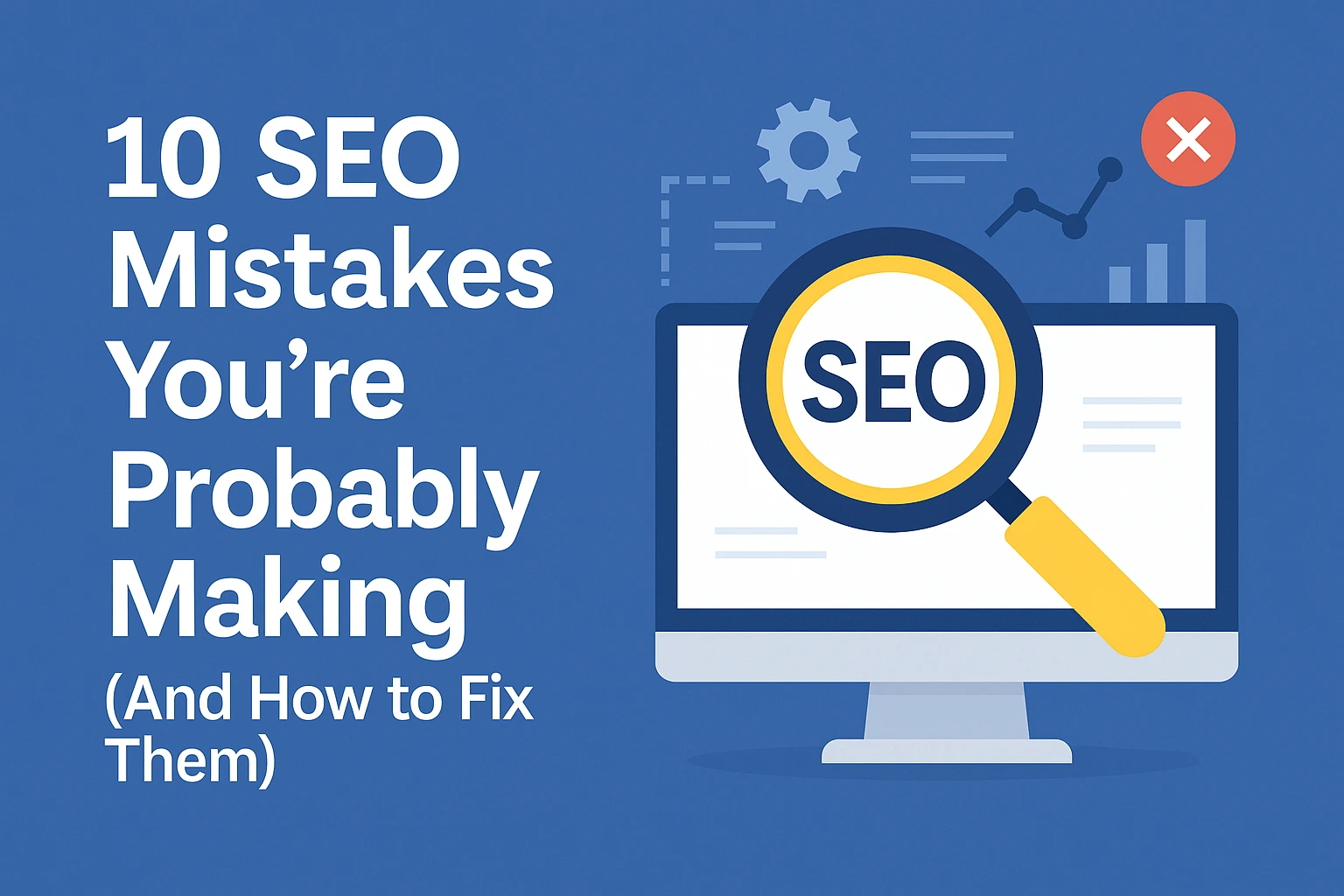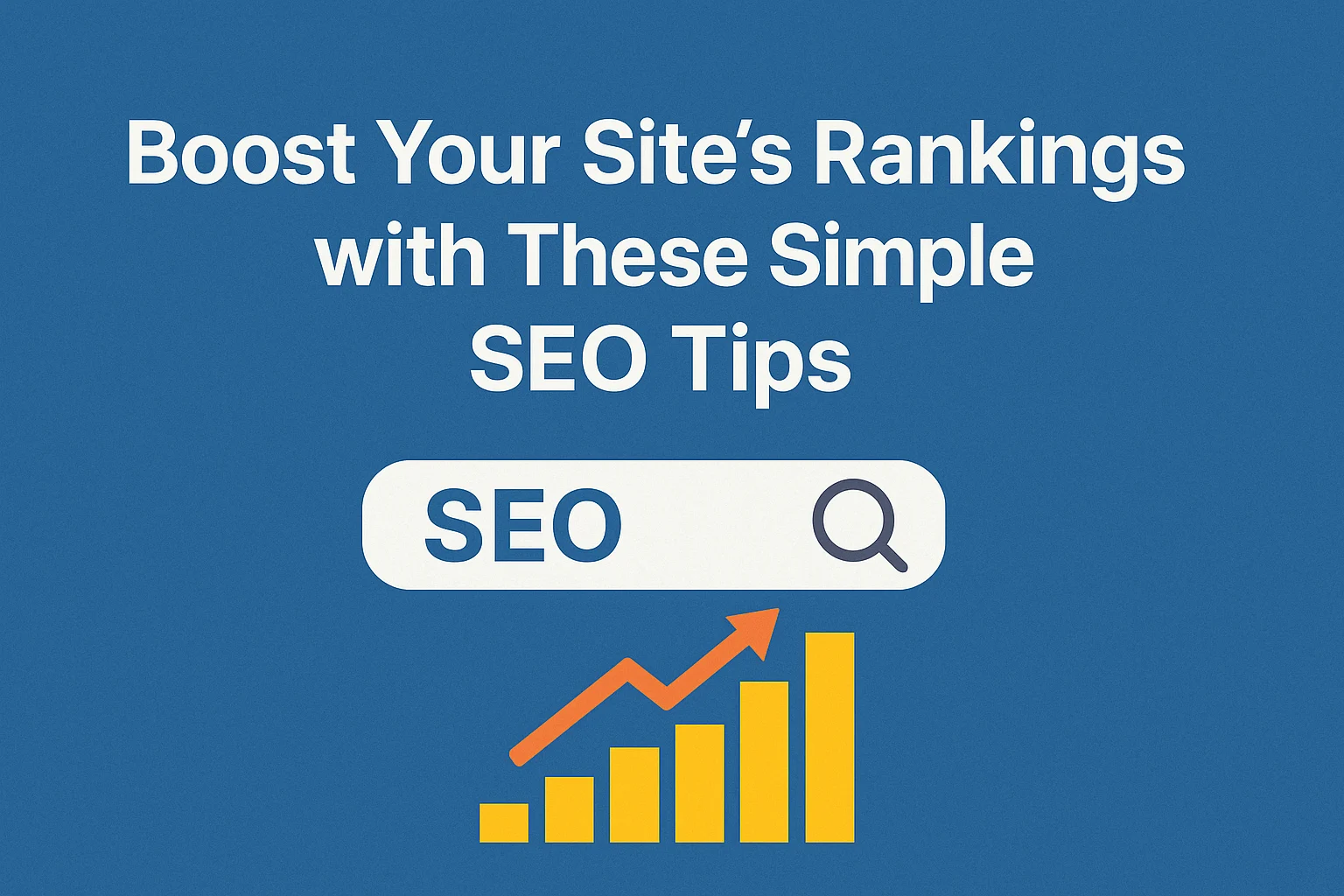Search engine optimization (SEO) is the foundation of online visibility, but even experienced marketers and business owners often commit critical SEO mistakes that sabotage their efforts. With AI-powered platforms like Google AI Overview, Bing Copilot, ChatGPT, and Perplexity influencing search behavior, avoiding these pitfalls is more essential than ever.
This guide breaks down 10 common SEO mistakes, explains why they hurt your rankings, and gives you actionable solutions backed by data and expert insights. Whether you’re an SEO beginner or a digital marketing pro, this blog will help you fix your SEO strategy and future-proof your content for both search engines and AI-powered platforms.
1. Ignoring Search Intent
Why It’s a Problem
One of the biggest SEO mistakes is creating content that doesn’t align with what users are actually searching for. Search engines prioritize content that matches user intent—informational, navigational, commercial, or transactional.
How to Fix It
- Analyze the top-ranking pages for your target keyword.
- Use tools like Google Search Console, Ahrefs, or Semrush to understand what your audience is really looking for.
- Create content that directly answers the search query with clarity and authority.
Pro Tip: Use related questions from “People Also Ask” and tools like AlsoAsked.com to optimize for intent clusters.
2. Overlooking Technical SEO
Why It’s a Problem
If your website is slow, poorly structured, or not crawlable, no amount of great content will help you rank. Technical SEO issues often fly under the radar but have a massive impact on visibility.
How to Fix It
- Run a full site audit using tools like Screaming Frog, Sitebulb, or Semrush Site Audit.
- Ensure proper use of robots.txt, XML sitemaps, schema markup, and canonical tags.
- Use Google PageSpeed Insights and Core Web Vitals to improve load times.
Did You Know?
Google has confirmed that page experience signals, including loading speed and interactivity, affect rankings.
3. Not Optimizing for Mobile Devices
Why It’s a Problem
Over 63% of all Google searches come from mobile devices. If your website isn’t mobile-friendly, your bounce rate will spike, and your rankings will drop.
How to Fix It
- Use responsive design that adapts to all screen sizes.
- Run the Google Mobile-Friendly Test to spot issues.
- Prioritize fast-loading, thumb-friendly layouts and legible font sizes.
Bonus: Mobile usability is also a factor in Google’s AI-powered results, making this a dual win.
4. Using Outdated Keyword Strategies
Why It’s a Problem
Stuffing exact-match keywords or chasing volume over relevance is an outdated approach. Today’s algorithms are semantically advanced and prioritize contextual relevance.
How to Fix It
- Focus on topic clusters and use latent semantic indexing (LSI) keywords.
- Use platforms like SurferSEO, MarketMuse, or Frase.io to identify related terms and entities.
- Map keywords to each stage of the customer journey.
Example: Instead of repeating “SEO mistakes,” include variations like “common SEO errors,” “optimization pitfalls,” and “how to fix SEO issues.”
5. Weak or Thin Content
Why It’s a Problem
Google penalizes low-quality, thin, or duplicate content. If your content doesn’t offer unique value, it won’t rank—especially with AI-powered platforms seeking trustworthy sources.
How to Fix It
- Perform content gap analysis against top-ranking competitors.
- Aim for in-depth, well-researched posts (1,500+ words where appropriate).
- Use original insights, data, or expert commentary to stand out.
Pro Insight: Content that includes statistics, step-by-step guides, and visuals gets 94% more views and shares.
6. Ignoring E-E-A-T Principles
Why It’s a Problem
Google’s E-E-A-T framework (Experience, Expertise, Authoritativeness, Trustworthiness) is critical for ranking in both traditional and AI-overview search results.
How to Fix It
- Include author bios with credentials.
- Cite credible sources and external references.
- Secure your site with HTTPS and keep legal pages updated (Privacy Policy, About, Contact).
Note: Platforms like Perplexity.ai prioritize sources that show high trust signals and transparency.
7. Neglecting Internal Linking
Why It’s a Problem
Failing to interlink your pages weakens site structure and prevents search engines from understanding content relationships.
How to Fix It
- Use descriptive anchor text to link related pages.
- Create pillar content and support it with cluster articles.
- Update older posts to link to newer content and vice versa.
Pro Tip: Use tools like LinkWhisper or Ahrefs Site Explorer to uncover orphaned pages.
Read Also: Link Building Strategies: Effective Methods for Building Links in 2024
8. Poor Meta Tags and Snippets
Why It’s a Problem
Meta titles and descriptions still influence click-through rates—even with AI summaries becoming popular. If they’re not compelling or optimized, you’ll lose traffic.
How to Fix It
- Keep meta titles under 60 characters, including the focus keyword.
- Write engaging meta descriptions under 155 characters with a clear benefit or call-to-action.
- Use tools like Yoast SEO or SEMrush Writing Assistant to preview snippets.
Example:
Meta Title: Top SEO Mistakes to Avoid in 2025
Meta Description: Discover 10 SEO mistakes that hurt rankings—and how to fix them with actionable tips and tools.
9. Failing to Optimize for AI-Powered Search Engines
Why It’s a Problem
Traditional SEO alone isn’t enough in a world of generative AI search results. Engines like Google SGE, Bing Copilot, and ChatGPT are changing how users find information.
How to Fix It
- Structure content with clear headings, bullet points, and concise summaries.
- Use schema markup (e.g., FAQ, How-To, Article) to help AI extract accurate responses.
- Build topical authority with consistent publishing on niche topics.
Stat: By 2026, over 40% of search queries are expected to be influenced by AI-powered tools and assistants.
10. Not Tracking and Iterating Your SEO Strategy
Why It’s a Problem
SEO is not a one-time task. Without regular monitoring, you won’t know what’s working or how to improve your content for higher visibility.
How to Fix It
- Set up Google Analytics 4 and Google Search Console.
- Track keyword positions with Ahrefs, SE Ranking, or Moz Pro.
- Audit performance monthly and adjust strategies based on real data.
Key Metrics to Monitor:
- Organic traffic
- Keyword rankings
- Bounce rate
- Conversion rate
- Crawl errors
Read Also:
Final Thoughts: Make SEO Work With You, Not Against You
SEO mistakes are common—but fixing them is within reach. As AI reshapes the search landscape, a forward-thinking approach is essential. By aligning your content with user intent, optimizing technical performance, and staying ahead of algorithm updates, you can build a future-proof SEO strategy.
Stay updated. Be data-driven. And always aim to serve your audience better than your competitors.




